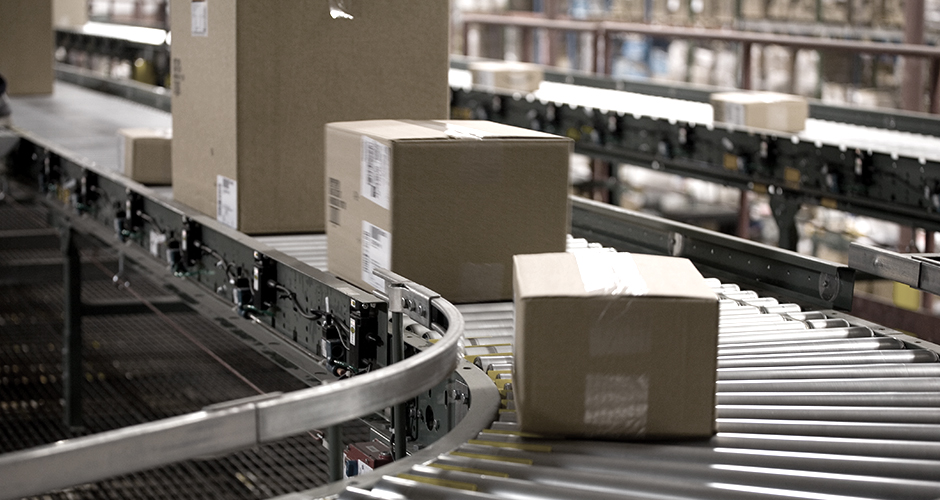Wasp Barcode Technologies: The Barcode Solution People
Inventory Control: The First Step in Supply Chain Management
The supply chain for any business involves everything from securing materials from a supplier to transporting a finished product to the customer. Most business owners aren’t involved in the day-to-day operations of their suppliers and transporters. To maintain efficiency throughout the supply chain process, businesses should first focus on inventory control.
[su_divider top="no" size="2"]
Inventory is the raw materials, work-in-progress goods and finished products that represent the primary source of revenue for any business; inventory control involves all the policies and systems in place for maximizing the use of that inventory -- including purchasing, shipping, receiving, storing and reordering.
[su_divider top="no" size="2"]
Inventory is the raw materials, work-in-progress goods and finished products that represent the primary source of revenue for any business;
inventory control involves all the policies and systems in place for maximizing the use of that inventory -- including purchasing, shipping, receiving, storing and reordering. While your inventory may not always be in your possession (for example, a third-party transporter may be involved in shipping the product from your warehouse to the customer), inventory control systems are how you maintain a healthy inventory balance.
[su_divider top="no" size="2"]
[su_divider top="no" size="2"]
Because inventory is often a business’ most vital and costly asset (it can represent up to
90 percent of all expenses),
keeping track of it is a virtual necessity -- yet
46 percent of the small businesses polled in the State of Small Business Report said they either don’t track inventory or use a manual process to do so, even in our increasingly competitive economy.
Here are five reasons why inventory control should be the first step in fine-tuning your supply chain management processes.

It helps you balance your inventory turnover ratio
One of the key metrics for successful warehouse management,
inventory turnover ratio is the cost of goods sold divided by average inventory. A balanced ratio is crucial in order to continue generating profit from your inventory, rather than wasting money on overstocking, stocking obsolete items, or expediting shipping to meet customer demand.
Low inventory turnover ratio (low cost of goods, high average inventory) means that you spend too much on items that should have already shipped to customers or never manufactured at all -- the cost of keeping them on the shelves while they deteriorate in value is counterproductive. On the other hand, high inventory turnover (high cost of goods, low average inventory) means you won’t be able to quickly meet demand if the market changes.

It frees up capital
Once you pay for the materials needed to produce your inventory, that money won’t become available again until you receive payment from a customer -- in other words, your capital is tied up in the promise of a sale. Unless your business has a short cash conversion cycle, this may prevent you from using that money to invest back into your business, or to hire new employees, among other popular strategies for increasing revenue growth. Part of inventory control is ensuring that inventory doesn’t go into production unless you know it will leave the shelf quickly.

It can help improve customer service
The desired result for a lean and efficient supply chain is for customers to be happy with a well-made and quickly delivered product. An optimized inventory and supply chain results in fewer shipments to complete orders, allows real-time tracking of orders from the
warehouse to a customer’s front door, accurate inventory that won’t allow for orders placed on out-of-stock items, and a reduced rate of return since customers will have fewer issues with their product.
Being able to handle a customer’s issue quickly and accurately will go a long way towards improving your standing and ensuring future business -- according to Forrester,
45 percent of US consumers will abandon an online purchase if their concerns are not addressed quickly.
[su_divider top="no" size="2"]
“Business executives are ‘increasingly integrating financial data, such as accounts receivable, with sales information that includes customer histories. The goal: to control inventory quarter to quarter, so it doesn't come back to bite the bottom line.’”
[su_divider top="no" size="2"]

Technology has made it easier than ever
In decades past, inventory control involved
spreadsheets and manual audits that were rife with human error, and left companies open to accounting mistakes that put them in both economic and legal quandaries. Now, automated and integrated systems are becoming the standard across all industries. As noted by Dennis Edkow in
PC Week (
via Inc.): “business executives are ‘increasingly integrating financial data, such as accounts receivable, with sales information that includes customer histories. The goal: to control inventory quarter to quarter, so it doesn't come back to bite the bottom line.’” That kind of real-time information integration wasn’t possible until recently, but inventory control solutions
are now built to handle these functions from day one.

It helps embrace emerging trends in supply chain optimization
From cloud computing to real-time tracking, future trends are quickly becoming realities for businesses of any size. The best way to integrate with innovations that will keep you one step ahead of your competitors is to have automated control of your inventory. For example,
“just-in-time” inventory will help with turnover ratios by allowing you to keep inventory levels just high enough to keep pace with demand. In order to complete “JIT” tasks like offering customizable packaging, businesses need strong relationships with suppliers via shared software databases, which will help them ship orders to your stores as needed.
[su_divider top="no" size="2"]
[su_divider top="no" size="2"]
A sophisticated supply chain involves many interconnected, yet independent parts working together to achieve customer satisfaction and increased revenue. In the oft-disrupted business world in which we operate today, our supply chain is subject to many variables that are out of our control, including shifting market demand and new competition. The one thing that can be controlled is our inventory -- where it’s located,
where’s it going, and what we need to do to keep it at levels suitable for growth.
Inventory control is the first step in ensuring an efficient supply chain, and considering that
poor management and lack of planning are two major reasons why small businesses fail, it may be the most important step as well.
To learn more about how your business can benefit from inventory management software, visit System ID Barcode Solutions or click here for a free quote.







